Rubik's Cube World Championships 2017 Paris
Most hobbies or sports have one competition, normally annually or biannually, that trumps the rest in terms of the competition, the stakes and the glory. We have the World Cup, the Olympic and Paralympic Games, the Winter Games and many more. Rubik’s Cube speedsolving has its own version – The World Championships. Every two years, some of the fastest speedcubers across the globe meet at one venue to compete for the World Champion title in their respective events.
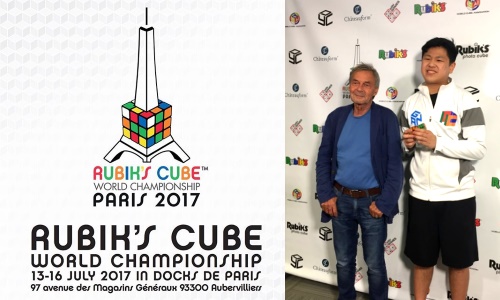
Erno Rubik the inventor of the Cube and Max Park, the winner of the Rubik's Cube World Championship 2017 Paris
While most local competitions offer certificates, medals or trophies, the World Championships offers huge cash incentives for those who can see off all of the competition to come in the top-3. The Rubik’s Cube World Championships took place in 2017 between the 13th and 16th of July in Paris, France, where over a thousand speedcubers from all different backgrounds and nationalities came together to compete. Both history and memories were built here, and here we will overview some of the highlights and scenes from the most competitive Rubik’s Cube competition ever.
The Run-Up – Hype, Speculation and World Records
The run-up to the World Championships was arguably just as exciting as the actual competition itself. After registration opened for all events, the community was shocked to see that the 1000 person competitor limit had been reached in just a few weeks. In fact, there were so many additional competitors registered that the total competitor limit was increased to 1100 competitors shortly after. This set the stage for the World Championships to be the largest competition of all time (unfortunately the final number of competitors fell just short of the Asia Championship in 2016, but it destroyed every other previous World Championship).
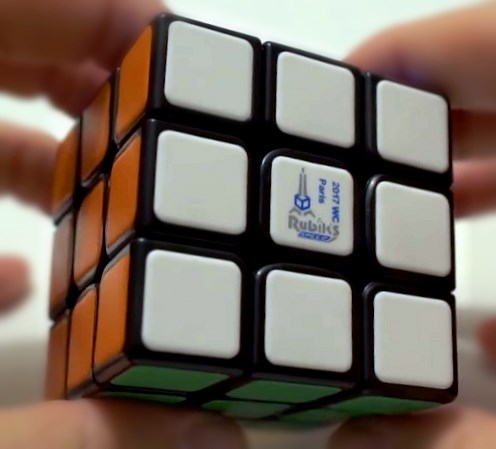
The new Gan/Rubik's collaboration cube was part of the registration package gave out to all competitors
In addition to the speed that registration filled up, there had been speculation about the possibility of a collaboration cube between Rubik’s and Gan Puzzle, a leading speedcube manufacturer. As Rubik’s puzzle had often been entirely disregarded in the past due to their rigid nature (and their poor attempt at challenging the market with their original Rubik’s speedcube), it was interesting to see that Rubik’s were willing to listen to the community and take some advice from a speedcube manufacturer that the community respected. The end result was hypothesised to be unveiled at the World Championships, something which contributed further to the hype of the competition.
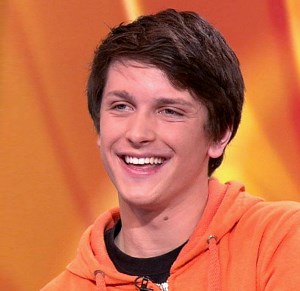 In terms of other competitions, the Latin America Cubing Tour was set to take place in the several weeks before the World Championships across the continent of South America. Some of the fastest speedcubers in the world followed the tour in its entirety, including Feliks Zemdegs and Antoine Cantin. As several competitions were taking place in such a short space of time, Feliks was able to demolish both his own and new World Records. In the several weeks before Worlds, Feliks beat the 7x7 single and average records, the 4x4 single record (with the second ever official sub-20 solve, 19.36), 5x5 single and average records and, most importantly, the Rubik’s Cube average world record. This was pivotal, as Feliks had previously held this record since 2010, only losing it to Max Park just two months prior. Feliks came back with a 5.97 second average, which became the first sub-6 second average in the World. In the following competitions, Feliks cemented his position on top of the world by beating Max’s previous record twice more, giving him the three fastest ever official averages.
In terms of other competitions, the Latin America Cubing Tour was set to take place in the several weeks before the World Championships across the continent of South America. Some of the fastest speedcubers in the world followed the tour in its entirety, including Feliks Zemdegs and Antoine Cantin. As several competitions were taking place in such a short space of time, Feliks was able to demolish both his own and new World Records. In the several weeks before Worlds, Feliks beat the 7x7 single and average records, the 4x4 single record (with the second ever official sub-20 solve, 19.36), 5x5 single and average records and, most importantly, the Rubik’s Cube average world record. This was pivotal, as Feliks had previously held this record since 2010, only losing it to Max Park just two months prior. Feliks came back with a 5.97 second average, which became the first sub-6 second average in the World. In the following competitions, Feliks cemented his position on top of the world by beating Max’s previous record twice more, giving him the three fastest ever official averages.
In addition to the LatAm Tour, the US Nationals competition took place simultaneously with the London Open on the weekend prior to the World Championships. At the latter competition, Feliks Zemdegs broke the World Record for 6x6 and 7x7 singles and averages.
The First Day
The doors opened at roughly 8:30am on Thursday 13th July, where the venue was unveiled to the competitors for the first time. Totalling 3200 square metres, the venue was one of the largest ever used for a speedsolving competition. The venue had a large area for competitors to solve, with up to 5 groups competing at a time. Directly in front of the competitor area was a large stadium-style seating area, set up for guests and solvers alike to watch the ongoing competition. Behind the seating area was the rest of the room; a large open area with tables scattered around for competitors to relax and spend time with friends. There was also a large viewing screen to allow competitors not directly in front of the action to watch it live.
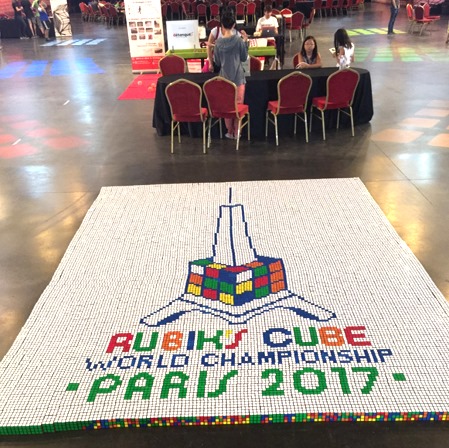
Rubik's Cube mosaic with the logo of the competition.
Outside of the main venue lay the Dock Eiffel building, which was being used for the Fun Village. In here there were displays of different puzzles, merchandise vending and a large mosaic of the World Championship 2017 logo. This was a quieter environment for those interested in trying new puzzles or purchasing souvenirs.
The day progressed slowly but steadily, as more and more people began to fill up the venue after the initial rounds of the first events had concluded. In the first round of 6x6, Feliks showed his true ability by breaking the World Record single and average yet again, furthering his records from only the weekend prior. The single solve achieved at London was so incredibly fast that nobody believed he would best it for a relatively long time. However, he managed to do just that in the final solve of his first mean. His records were so stunning that he managed to beat the 2nd place competitor, Max Park, by over 15 seconds.
After a fairly uneventful first attempt in the Multiple Blindfolded event (where Marcin Kowalczyk was expected to break his World Record which has stood since 2013, but unfortunately only managing 31/46 cubes compared to his record of 41/41), 7x7 lay ahead. Expectations were high for Feliks as usual, especially considering his records earlier in the day. Feliks certainly did deliver, breaking the World Record single by nearly 10 seconds down to 2 minutes 6 seconds. His mean also broke the World Record, and his performance placed him nearly 10 seconds above 2nd place Kevin Hays.
After the first day, Feliks had broken every World Record that he had set the previous weekend in London, and expectations soared for the finals of these events on the following day, where Feliks showed no sign of slowing down. Little did anyone know the wonders that Feliks would display in the following day, as he breaks one of the biggest barriers in modern day speedcubing…
The Second Day
The second day started in a more relaxed fashion – everyone had already attended an entire day, so everyone had found their friends and their tables and most people simply returned to their tables from the previous day. Feliks had shown signs of improvement from the Latin America tour, where he broke both World Records for the event. Prior to the tour, his single World Record had stood since November 2016 and his average since July 2016. This bode well for the World Championships, where he was expected to not only win in dominating fashion, but also break the records set only a few weeks prior. Square-1 was also expected to get a major revival, as updated mechanisms had plummeted times for solvers. Times had improved so much that the winning average from the 2015 World Championships wouldn’t even have made the final at this competition, so there were high expectations for this competition. The first round of 4x4 was also held on this day, and since the breaking of the 20 second barrier by Sebastian and Feliks, there was a high probability of similarly incredible showings for this competition.
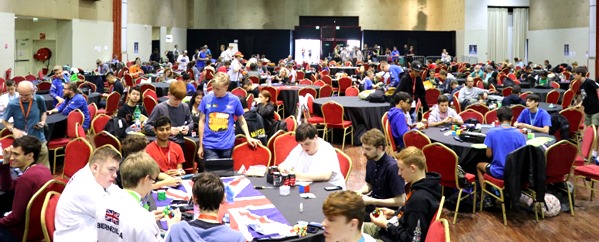
Square-1 started as expected, with Charlie Stark taking the first two rounds with ease and even breaking his own Continental Record for Europe in the second round with an average of 9.07 seconds, cementing his place at second in the World. Jayden McNeill also broke the Oceanic Record, one of the rare few that aren’t held by Feliks. However, it wasn’t until the second round of 5x5 where the real action began.
Feliks started his average in a surprisingly lacklustre fashion – A 53.69 followed by a 50.99. Obviously still world class solves, but as had been shown in the first round where he was pipped to first place by Max Park, he needed to do better in order to stay on top of the world. Nobody could have predicted that this average would turn into a World Record, as Feliks stunned audiences with a 38.52 second single solve. The 40 second barrier had only recently been broken by Feliks outside of competition, and now he had officially broken it too. The World Championships was also a prime competition for 5x5 singles for other solvers, as the top 4 in the world now consists of World Championship solves.
Friday also saw a fairly controversial stunt being pulled as the day drew to a close. Clock solver Pierre Bouvier, who felt like his average was beyond saving, decided to fake a single World Record solve. As shown by video footage after the attempt, he performed the whole solve as though it were a World Record breaking attempt, before finishing the solve at 3.00 seconds and reacting as though he had broken the record. It was soon revealed that this was simply a fake attempt. This has caused some controversy within the community as the stunt may have distracted other solvers who were completing their averages. The outcome of the discussion has yet to be decided, as there is still a potential for a ban/disqualification of the attempt and other attempts. As of now, only the solve itself has been DNFed (as the puzzle was never actually solved).
The Third Day
Saturday was the biggest day for most people as it hosted the first round of the Rubik’s Cube. In addition to this, the first rounds of Pyraminx and 2x2 were also held. All of these events were open to all competitors who had officially competed before the World Championships, so naturally they hosted the largest number of competitors. In the first round of the Rubik’s Cube event, 913 competitors completed a solve and recorded official results. In addition, the first round showed a new face to beat Feliks Zemdegs in a round of 3x3 – Kian Mansour. Kian was the only person who achieved a sub-7 average in the first round, placing above Feliks who achieved a 7.06 average. Kian was a notable addition to the group of 7 people who had beaten Feliks in a round of 3x3 as he uses the Roux method. This average placed him at 7th in the World, and makes him the fastest Roux speedsolver in the World, at only his fifth competition.
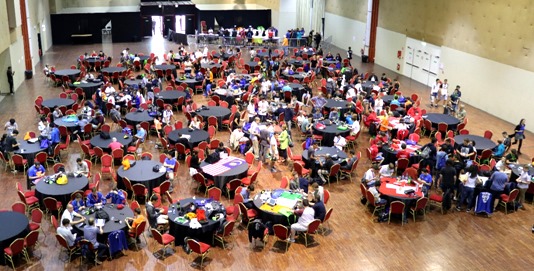
On this day the first Rubik’s Nations Cup was also held. Teams of 3 competitors from a country joined together to solve in a relay system with the newly released Gan-Rubik’s collaboration puzzle. 72 teams competed for the grand prize of 1500€ per competitor and a trophy from Erno Rubik himself. The finals consisted of Phillip Weyer, Sebastian Weyer and Cornelius Deickmann of Team Germany against Feliks Zemdegs, Jayden McNeill and Tomoya Firman of Team Australia. The Germans managed to clinch it and took home the Grand Prize, ending the day at 11:30pm.
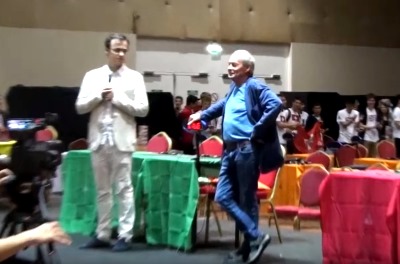
Erno Rubik, the inventor of the cube showed up on Awards Ceremony to hand over the prize to the winners of the Nations Cup.
The Final Day
The final day of the competition, Sunday 16th July, was the most exciting day for many reasons. Not only did the day host a myriad of final rounds across many different events (4x4, 5x5, One-Handed, Square-1 etc.), but it also hosted arguably the main event, the Rubik’s Cube final.
The day opened with the second round of 4x4, a shocker for many reasons. Not only did the top 7 competitors achieve sub-30 second averages, but in addition Max Park took the win in this round with a 24.71 average and two 23 second single solves. Feliks Zemdegs, despite managing a 21.76s first solve, fell short with a 27.17s average. Under normal circumstances this would suffice for an easy win, but due to the incredible level of competition at the World Championships, Feliks actually fell outside of the podium positions for this round, coming 4th behind Max, Sebastian Weyer and Seung Hyuk Nahm.
The second round of the Rubik’s Cube also bought incredible shocks. Kian Mansour, the winner of the previous round, fell catastrophically from 1st to 92nd place. This placed him outside of the top-80, meaning he failed to progress to the semi-final, despite his incredible performance in the first round. Another major shock was Feliks’ placement. With a 7.28 average, once again normally a competition winning average, he placed 4th behind Max Park, Lucas Etter and Mats Valk. This is even more significant due to Feliks’ track record in 3x3. Before the World Championships, Feliks had never failed to fall outside of the top-3 (podium) in any single round of the Rubik’s Cube event. This round cemented the idea for everyone that this competition was like no other – an incredible average that would easily podium in almost every other competition the WCA has ever held, failed to do so at the World Championships.
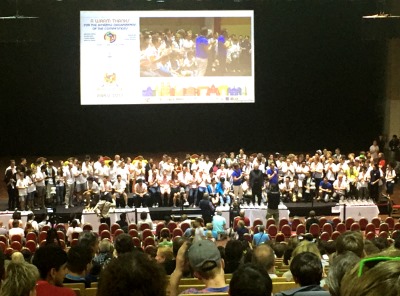
The awards ceremony
In the second round of Pyraminx, Jules Desjardin had a surprise victory over Drew Brads with a European Record average of 2.32 seconds. This broke the previous Continental Record (also the World Record at the time) set by Rafal Waryszak of 2.41 seconds almost a year prior in July 2016.
In the second round of Skewb, Michal Rzewuski secured the first sub-3 average of the competition so far, with a round-winning 2.85 second average. In addition, Jonatan Klosko achieved the only sub-2 second single solve of the round, with a 1.81 single on his third solve.
Later in the day, the semi-final of the Rubik’s Cube took place and confirmed the competitors for the final round at the end of the competition. Feliks Zemdegs once again failed to win the round, falling short of Canada’s Bill Wang. This meant that Feliks had yet to win a single round of 3x3 at the World Championships, and had even failed to podium in one. Competition was fierce, however, with a 7.79 average or better being required to make the final round. In addition, Feliks Zemdegs tied Patrick Ponce’s average of 7.39 seconds in 2nd and 3rd place, and there was a three way tie between Kevin Gerhardt, Mats Valk and Seung Hyuk Nahm who all secure 7.46 averages (in the event of a tied average, the best single solve is used to order the competitors. The difference between the best single solves of Mats and Seung was 0.04 seconds)
The Square-1 final saw Jayden McNeill take the crown with a 10.07 average and a 7.47 single, both continental records for Oceania. Unfortunately, Charlie Stark, the winner of the two previous rounds by considerable margins, failed to podium and finished in 9th place. Daniel Karnaukh achieved a 6.66 second single, a solve that placed him second in the world for a single solve by 0.01 seconds.
The 5x5 final, despite not seeing any new World Records (after Feliks’ performance in the second round, this was a monumental task regardless), but it did host one of the most competitive rounds of 5x5 ever seen at a competition. In fact, to secure a podium place, a sub-50 second average was required, something that up until recently only Feliks could achieve. In fact, the podium of this competition displayed the only three people to ever achieve a sub-50 second 5x5 average, and all of them achieved their best averages at this competition. Word-Class single solves were to be had all around. Kevin Hays and Seung Hyuk Nahm both secure 45 second single solves and Feliks got himself another 43, however the best single of the round came from Max Park who obliterated his previous best with a continental record single of 42.63 seconds.
In the Pyraminx final, Drew Brads made up for a relatively lacklustre performance in the rest of the competition with a World Record 2.04 average to win the competition. In fact, 2nd place’s average was 2.62 seconds, putting Drew over half a second clear of second place.
In the 3x3 Blindfolded final, a single solve of 25.34 seconds was required to podium. Two members of the podium even secured means, with a 25.80 and 26.20 mean for 2nd and 3rd place respectively. Despite these insane results, nothing could come close to the first round’s results for the event, where 16 people secure sub-30 second singles and the podium required a 22.43 second single or better.
The 4x4 final saw more shocking results, with Feliks finishing in 3rd place behind Sebastian and Bill Wang. However, this round was more exciting than the others for many reasons. In Sebastian’s third solve he achieved a time of 19.79 seconds, only the third sub-20 single in an official competition. In addition, his final solve was a DNF, meaning that his 27.79 solve from earlier in the average counted. Despite his average being hindered so massively, he was still able to win by almost 0.80 seconds. Bill Wang also had a stellar performance with a 24.91 Canadian Record average and even a 20.69 continental record single, putting him 3rd in the World behind Sebastian and Feliks, and making his single solve the fastest non-sub-20 second solve.
The 3x3 One-Handed final started to see more and more people gathering in the seating area, as the Rubik’s Cube final was only an hour or so away. This allowed a much larger crowd to witness Max Park break the World Record average for One-Handed with a 10.31 average, including a counting sub-10 single of 9.77. Feliks also achieved a stunning 8.93 second single in his final solve, and Daniel Rose-Levine made a giant leap by achieving a podium result at the World Championships despite only officially competing for the first time in mid-2015.
Next was the 2x2 final, which saw a fairly controversial three-way tie between 3rd, 4th and 5th places, all with averages of 1.85 seconds. 4th place Daniel Rose-Levine missed out on a second podium by 0.05 seconds (when comparing the best single solves of the tied competitors), despite having an average that, rounded to 3 decimal places, was better than his two opponents.
And then came the 3x3 finals. This was the event that everyone had been waiting for, and a massive crowd of spectators gathered to watch the top-12 speedsolvers from around the World go head-to-head to take home the grand prize of 3000€ and the title of World Champion. In a surprise turn of events, Feliks Zemdegs failed to podium yet again, making this his second round and first final round that he hasn’t placed in the top three. He achieved an average of 7.28 seconds, whereas Lucas Etter, bronze medal winner, had a 7.24 second average. Seung Hyuk Nahm took second place with a 7.02 average and Max Park was crowned World Champion with an average of 6.85 seconds. Patrick Ponce secured the fastest single solve of the entire round with a 5.477 single, done immediately after Max Park’s equally outstanding 5.877 solve. The first solver of the finals, French national Alexandre Carlier, was the only other person to solve the puzzle in less than 6 seconds in the finals, with a time of 5.91.
There was a fairly large controversy with the final result, however, as during the second attempt of Seung Hyuk Nahm (silver medallist), a timer malfunction resulted in him losing a mid-6 second solve (the final time was never displayed, thus could not be counted). In his extra attempt, his time was 8.14 seconds, which turned out to be his worst single of the entire average. Had his 6 second time been accepted, Seung would have actually won the World Championships with a faster average than Max Park. This sparked heavy criticism of the Speedstacks timers, used for official speedsolving competition, which has called for a push for a newer timer design to place the reset/power buttons out of reach of the hand-pads, such as on the back or the sides of the timer.
Overall the World Championships was an incredible experience. Dozens of the world-elite speedsolvers fought their hardest in one of the most competitive WCA contests ever held. From a personal standpoint, the competition is a fantastic opportunity to meet old friends and make new ones alike. The Nations Cup was a fantastic opportunity to trial the new Gan/Rubik’s collaboration speedcube and also bring out some national pride in the audience, in a display that truly revealed the sheer number of countries that had competitors in attendance and showed how much the WCA and speedcubing have grown since their humble beginnings back in 2003.
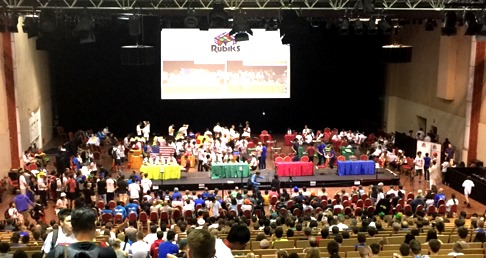
The Nations Cup